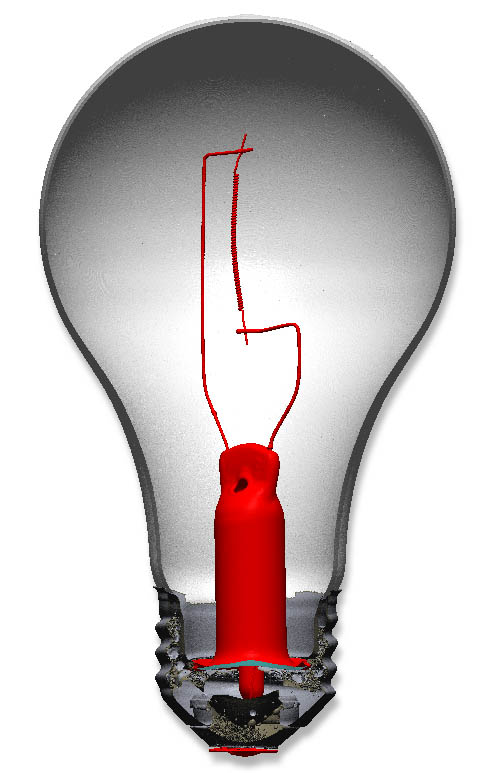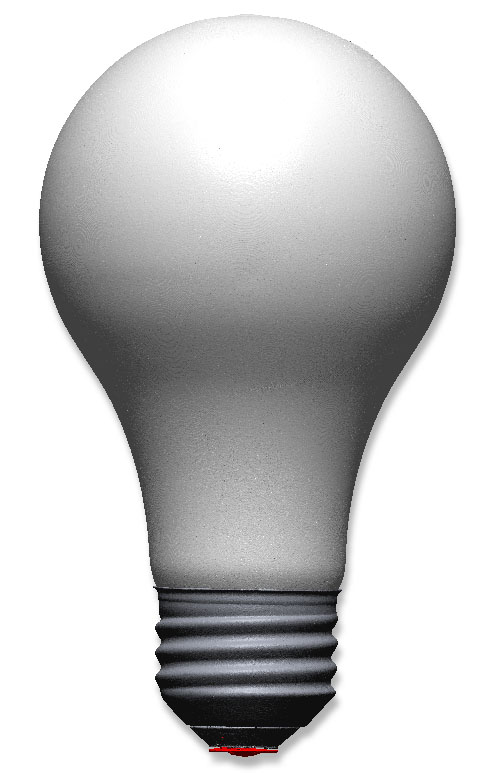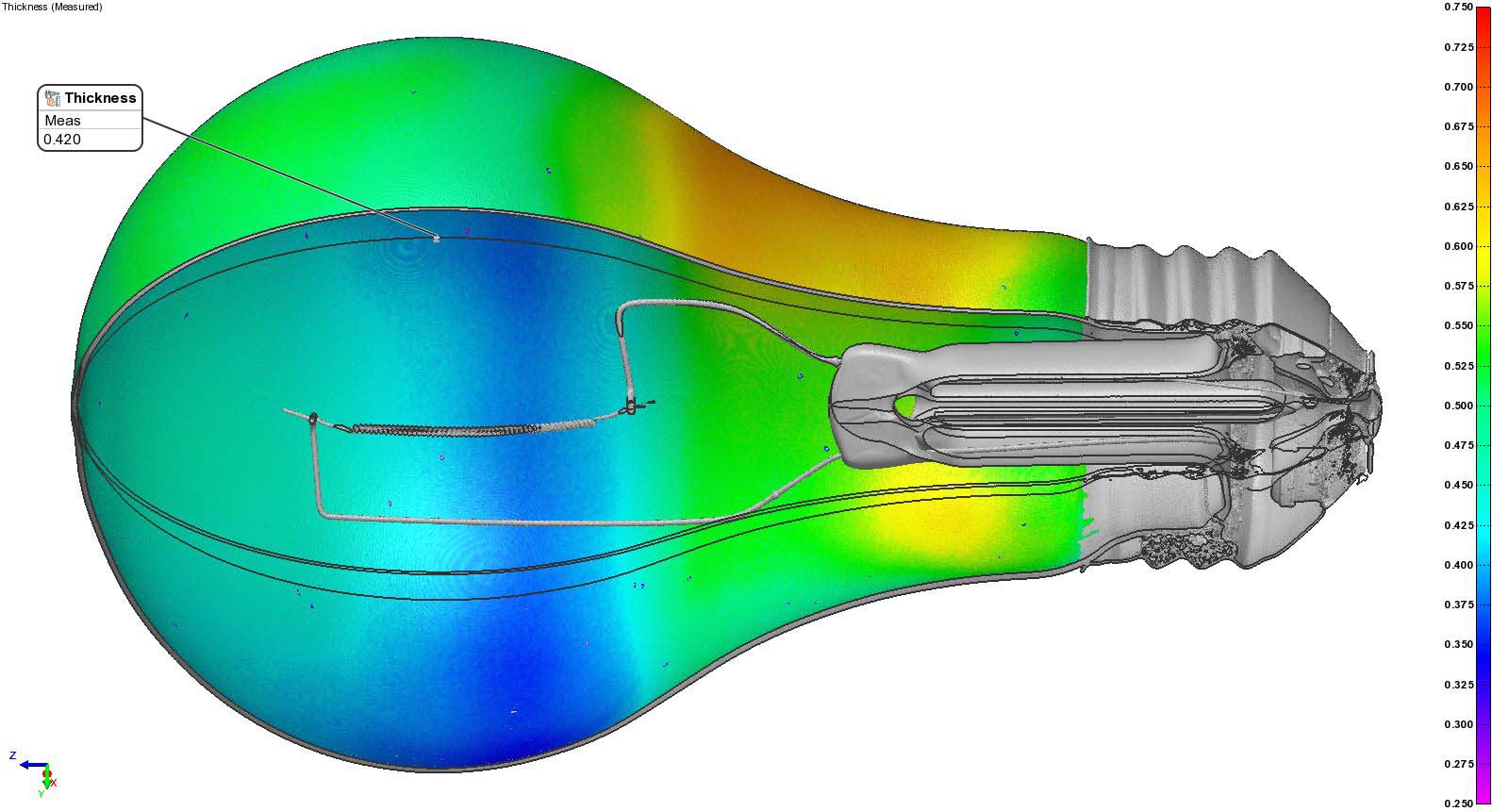Case study of Industrial X-Ray CT Scan of Multi-Material Light Bulb


Multi-material CT Scanning Complex Assemblies
Multi-material assemblies can be quite difficult to CT scan and collect useable data. This is because varying material densities require different optimizations for the best possible outputs. However, using several hardware and software techniques we can reduce this inevitable noise significantly.
This case study demonstrates the scan, rendering, and analysis of a light bulb with glass, tungsten filament, wires, insulation, and metal cap.

Exporting CT Data into Mesh Files
High resolution exporting into .stl or similar mesh formats allow for the analysis of CT data in many softwares including PolyWorks for dimensional inspection, Geomagic Design X for reverse engineering, or ANSYS for FEA.
Dimensional and Non-Destructive Analysis
Dimensional analysis can be performed on this data including wall thickness analysis, profile/ form mapping, datum alignments, and GD&T. Cross sections can be cut through using the central axis to see specific locations. Porosity can be extracted and measured for volume and location. Cracks can be rendered for failure analysis.

CT Slice Analysis
Raw, reconstructed CT data can offer insights that re-constructed mesh files cannot. Using a variety of imaging tools we can create visual scenarios like total porosity throughout a given range.
This Rotational Slice Clip shows imaging about the axis of the bulb.





